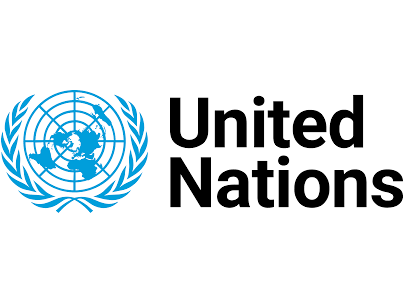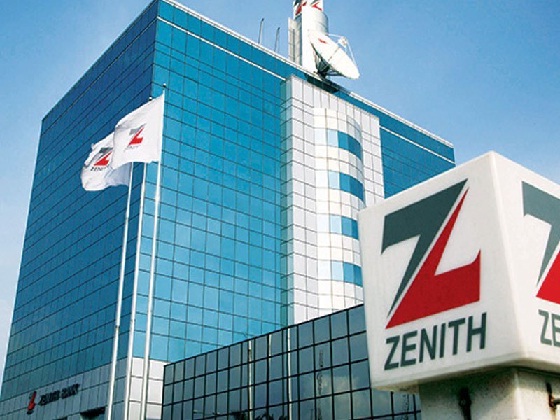Health
World Health Day: Nigerian Youths Call for Action to Improve Adolescents’ Health

Youth leaders and civil society groups in Nigeria have urged the government to invest in equity-enhancing strategies to restore crumbling services for women, newborns, children and adolescents.
The Executive Director of the Africa Health Budget Network (AHBN), Dr Aminu Magashi, said this in Abuja on Tuesday to commemorate the 2021 World Health Day.
The World Health Day is being commemorated globally on April 7, under the theme “Together for a fairer, healthier world”.
On this occasion, the World Health Organisation (WHO) calls for urgent action to eliminate health inequities and mobilise action to attain better health for all and leave no one behind.
Magashi said that this year’s celebration was being held at the backdrop of the COVID-19 pandemic which continued to threaten the improvement in health and social services.
“The theme for this year’s World Health Day focusing on ‘Building a fairer, healthier world’ reminds us of a need to invest in equity-enhancing strategies to address the needs of the most vulnerable.
“COVID-19 has exacerbated inequities, putting at risk hard won gains that have been made over the past decade,” says Helga Fogstad, Executive Director of the Partnership for Maternal, Newborn & Child Health (PMNCH)
“Ensuring that women, children and adolescents are protected from the disproportionate indirect social and economic challenges of the pandemic and associated financial crisis will require action from all stakeholders,” adds Fogstad.
He disclosed that Nigeria was among 10 countries that recently heeded the call, and recently made major commitments to prioritise investments for the health and well-being of women, children and adolescents.
“The West African nation has pledged $2.3 billion during 2020-2028 for strategic interventions that protect the reproductive, maternal, newborn, child, adolescent and elderly health and nutrition through access to family planning services, immunisation and nutrition programmes.
“Today youth leaders, campaigners and representatives of civil society organisations from across Nigeria are meeting to deliberate on the progress of improving the health and well-being of women, children and adolescents in Africa’s most populous nation,” he said.
According to him, Nigeria has the largest youth population in Africa.
“Since the COVID-19 pandemic erupted, the group has been negatively affected more than others due to the disruptions of essential health, nutrition and social services.
The World Health Day 2021 is aimed at building a fairer and healthier Nigeria,” said Mr Muhammad Usman, Chair of the National Advocates for Health (NA4H).
“I am therefore calling on both federal and state governments to improve budgetary allocations and timely release of funds for health interventions, particularly for family planning, nutrition, primary healthcare including the Basic Healthcare Provision Fund and the national health insurance for universal health coverage.”
The participants at the event discussed recent trends in maternal, newborn and adolescent health in Nigeria.
They also discussed opportunities for parliamentarians, including National Assembly’s committees on health and finance, to contribute towards better health for women, girls and adolescents.
Young people account for over 60 per cent of Nigeria’s population,” said Mrs Oyeyemi Pitan, Convener of the Nigerian Youth Champions for Universal Health Coverage (NYC4UHC).
“Therefore, the government, both at the federal and state levels, must invest in the health of young people by ensuring that all primary healthcare centres are adequately staffed, equipped and functional.
“This is to provide access to sexual and reproductive health services, mental health services and essential life-saving drugs and commodities,” Pitan noted.
NAN reports that in 2020, PMNCH issued a 7-point call to Action in response to the devastating effects of COVID-19 on the health and well-being of women, children and adolescents.
It called on leaders to protect and prioritise their rights and health during the COVID-19 response and recovery by strengthening political commitment, policies and financing for vital health services and social protections, particularly for the most vulnerable.
For adolescents, it complements the PMNCH-led worldwide Call to Action on Adolescent Wellbeing.
Other low and middle-income countries that have made similar commitments include: Kenya, Liberia, Afghanistan, India, and Mexico, while donor countries, Canada, Germany, Sweden and United Kingdom.
The U.S. and the Bill and Melinda Gates Foundation have also pledged support for this critical area of global health and development that is vital to the achievement of universal health coverage.
However, experts say a lot still needs to be done and stopping preventable deaths of women, girls and children must remain a top priority.
In addition, the COVID-19 pandemic has further worsened the situation as a result of disruption of essential Reproductive Maternal, Newborn, Child and Adolescents’ Health services, including family planning at all levels of healthcare delivery.
Recent data from the WHO from 105 countries show that 90 per cent of countries have experienced disruptions to health services, with low- and middle-income countries reporting the greatest difficulties.
Some of the most frequently disrupted services include those related to: immunisation services (facility-based services: 61 per cent and outreach facilities: 70 per cent) and family planning and contraception services: 68 per cent.
On health statistics in Nigeria, WHO said about 20 per cent of all global maternal deaths occurred in Nigeria, with over 600,000 maternal deaths and about 900,000 maternal near-miss cases between 2005 and 2015 respectively.
It said that a woman in Nigeria had a 1-in-22 lifetime risk of dying during pregnancy, childbirth or postpartum/post-abortion compared with the lifetime risk of 1 in 4900 in the most developed countries.
Nigeria’s large population size and high women, children and adolescent (WCA) morbidity and mortality means that the country’s progress can significantly shift the development in Africa and globally.
The State of Child Health, according to the latest UNICEF “Levels and Trends in Child Mortality” stated that Nigeria recorded an estimated 858,000 under-five deaths in 2019.
With about 7.4 million children currently born annually in Nigeria, improved policy and investment in infant and child health is crucial to prevent an increase in under-5 mortality.
Access to WASH in Schools was said to be a third of all schools 33 per cent have basic water supply services while 26 per cent of schools provide access to basic sanitation services.
As little as three per cent of schools have girls’ toilet compartments that have provisions for menstrual hygiene management.
Hand washing facilities are not available in 76.4 per cent of schools while about one in 10 schools 10 per cent have access to basic hygiene services.(NAN)
Health
Lassa Fever Death Rate Rises as Cases Spread — NCDC

The Nigeria Centre for Disease Control and Prevention (NCDC) has reported a rise in the fatality rate of Lassa fever, as the disease continues to spread across states with new confirmed cases and more deaths.
The NCDC disclosed this in its latest situation report for Epidemiological Week 23, June 2–8, 2025, which was posted on its official website on Wednesday.
According to the agency, Nigeria has recorded 143 deaths from 758 confirmed Lassa fever cases so far this year.
This translates to a case fatality rate (CFR) of 18.9 per cent, higher than the 17.8 per cent recorded during the same period in 2024.
The NCDC also revealed that 11 new confirmed cases were reported in the week under review, up from eight cases recorded the previous week.
The new cases were detected in Ondo, Edo, Bauchi, and Taraba States.
“In 2025, 18 states have recorded at least one confirmed case of Lassa fever, spread across 96 Local Government Areas.
However, 90 per cent of all confirmed cases were reported from just five states: Ondo 31 per cent, Bauchi 25 per cent, Edo 16 per cent, Taraba 15 per cent, and Ebonyi 3 per cent,” the report stated.
The agency noted that the age group most affected remained young adults aged 21 to 30 years, with a median age of 30.
It also reported one new healthcare worker infection in the reporting week, bringing the total number of affected health workers in 2025 to 23.
The NCDC identified several challenges fueling the outbreak, including late presentation of cases, poor health-seeking behaviour, and high cost of treatment, inadequate sanitation, and low awareness in affected communities.
To curb the spread and reduce deaths, the agency said it had activated a multi-sectoral Incident Management System and deployed 10 Rapid Response Teams to states with the highest burden.
Additional response measures included the training of health workers on case management, the launch of Infection Prevention and Control (IPC) e-learning platform, community sensitisation campaigns, environmental response interventions, and media outreach in collaboration with stakeholders.
The NCDC urged Nigerians to maintain high hygiene standards, seek medical attention early when symptomatic, and avoid contact with rodents and their droppings, known vectors of the disease.
Lassa fever is a viral hemorrhagic disease transmitted primarily through contact with the urine or stool of infected rats.(NAN)
Health
UN Women Trains Bauchi Artisans on Biogas Digester Installation

The UN Women says it has trained 20 artisans and seven agricultural extension workers on biogas digester installation, maintenance, and kitchen gardening to boost livelihoods in Bauchi’s rural communities.
The National Coordinator for the UN Women Biogas Projects,
Mr Desmond Osemije, disclosed this on Tuesday at the opening of the training in Bauchi.
Osemije said that the initiative was also designed to tackle climate challenges in rural communities.
He explained that the 20 technicians, primarily plumbers, were being equipped with the skills to install and maintain biogas digesters and will, in turn, train 250 rural women beneficiaries in Bauchi and Dass Local Government Areas.
Osemije further said that 250 rural women would benefit from the biogas digester, comprising 125 each from Bauchi and Dass LGAs.
“Additionally, seven agricultural extension workers are undergoing training to establish kitchen gardens, enabling rural households to grow vegetables and other crops for easy access to fresh food.
“This project seeks to improve the time use of women, boost agricultural productivity and incomes, enhance health standards, reduce deforestation, and contribute significantly to combating climate change,” Osemije said.
He also said that producing low-cost biogas from animal waste would provide rural women with affordable clean energy for cooking, reduce income and time poverty.
It will also lessen their exposure to health hazards and risks of gender-based violence.
Also speaking, Hajiya Marka Abbas, the National Public Relations Officer of the Small Scale Women Farmers Organization of Nigeria, underscored the need for collaboration with UN Women to promote sustainable agricultural practices and a cleaner environment.
She said that the project not only trains women and artisans to install and maintain bio-digesters, but also creates opportunities for income generation and economic independence.
“By converting waste into biogas and organic fertiliser, the project supports a circular economy, lowers greenhouse gas emissions, and combats deforestation.
“The initiative is being implemented in partnership with the Bauchi State Government through the Ministries of Women Affairs and Agriculture,” she said
A participant, Miss Fatima Usman, expressed optimism that the training would enhance her livelihood and pledged to pass on the knowledge to other rural women. (NAN)
FEATURES
Why Genotype Compatibility Matters in Preventing Sickle Cell

Sickle Cell Disease (SCD) is a genetic blood disorder that arises when both parents carry the sickle cell gene, creating a 25 per cent chance of transmitting the disease to their offspring with each pregnancy.
Globally, an estimated 400,000 babies are born annually with SCD.
Medical experts have consistently warned that genotype incompatibility remains the leading cause of new cases and should be a central consideration among intending couples.
According to them, avoiding unions between carriers, especially those with AS and SS genotypes could greatly reduce new incidences, limiting them to carriers alone.
In high-income countries, the average life expectancy for individuals living with SCD is approximately 57 years.
However, the outlook is more severe in Sub-Saharan Africa, where 50 to 80 per cent of children born with the disease die before the age of five.
In contrast, babies born with SCD in the United States have a 95 per cent chance of reaching adulthood.
Given these disparities, experts are unanimous that prevention is the most effective and affordable strategy for eliminating the disease.
Prof. Titus Ibekwe, Provost of the College of Health Sciences, University of Abuja, underscored this view during a recent public lecture in Abuja.
It was titled “The Evolving Therapeutic Landscape in Sickle Cell Disease”.
He emphasised the importance of proactive partner selection based on genotype compatibility.
“Prevention is key in the fight against sickle cell, and this costs nothing.
“It simply means paying close attention when choosing a life partner ensuring that individuals with the AS genotype do not marry another AS.
It is also that an AS does not marry an SS, or two SS individuals do not marry”.
Ibekwe explained that such unions greatly increase the risk of having children with SCD, and that sustained adherence to genotype-based partner selection could drastically reduce, if not eliminate, the disease burden.
Beyond prevention, Ibekwe noted that treatment options for individuals living with the disease have expanded, including advanced therapies such as bone marrow transplantation and gene therapy.
He explained that gene therapy aims to correct the faulty gene responsible for the disease, allowing it to function like a healthy one.
Also speaking on the burden of SCD in Nigeria is Dr Maureen Achebe, Clinical Director of Haematology at Harvard’s Brigham and Women’s Hospital and Associate Professor of Medicine at Harvard Medical School.
She disclosed that Nigeria bears the highest global burden of the disease.
“Every year, 300,000 babies are born with SCD in Sub-Saharan Africa, and 150,000 of them are born in Nigeria alone,” she said.
Achebe outlined this as a major public health concern and warned that, with Nigeria’s high fertility rate, the number is expected to rise greatly by 2030.
She advocated for newborn screening to detect SCD before symptoms begin, noting that babies appear normal at birth but benefit greatly from early diagnosis and care.
“Without early identification and intervention, infants will continue to die of undiagnosed anaemia, pneumococcal sepsis, or severe malaria,” she said.
Achebe noted that the sickle cell trait historically evolved as a natural protection against malaria.
According to her, individuals who carry one sickle cell gene (AS genotype) are less likely to die from severe malaria compared to those without the gene (AA genotype).
“However, those with full-blown SCD suffer from chronic complications, reduced quality of life, poor educational and professional outcomes, and premature mortality,” she said.
Additionally, she emphasised the importance of preventive strategies, urging the use of vaccinations, daily folic acid supplements, and proactive infection control.
She also recommended hydroxyurea as a proven daily treatment that improves survival rates and reduces the severity of symptoms.
While she recognised the promise of gene therapy and bone marrow transplantation, she pointed out their high costs, limited accessibility, and the fact that children under 12 tend to respond better to these treatments.
Achebe clarified that while gene therapy treats the symptoms and effects of the disease, it does not eliminate the sickle cell gene from the patient’s reproductive cells, meaning affected individuals can still pass it to their children.
She warned that the total economic toll of SCD in Sub-Saharan Africa currently stands at over $9.1 billion annually, projected to rise to $10 billion by 2030.
“Tackling SCD requires strong financial and political will to scale up newborn screening and ensure nationwide access to care,” she said.
Achebe further stressed the need for public awareness, early diagnosis, and cultural education to dispel myths surrounding the disease.
“Sickle Cell Disease is a scientifically inherited condition, not caused by witchcraft,” she affirmed.
In the same vein, Prof. Obiageli Nnodu, Director of the Centre of Excellence for Sickle Cell Disease Research and Training (CESRTA), University of Abuja, highlighted the importance of continued research and capacity building.
She explained that CESRTA, established in 2015, has made major progress in clinical and translational research to bridge treatment gaps in Nigeria and beyond.
“Our centre provides platforms for skills development and engages in strategic collaborations with local and international institutions to improve care outcomes,” she said.
Following the 5th Global Congress on Sickle Cell Disease, the centre was upgraded to the National Centre of Excellence for SCD Research.
This is a major milestone in Nigeria’s efforts to combat the disease.
As the world marks World Sickle Cell Day on June 19, experts are calling for a renewed push toward genotype awareness, partner compatibility, and universal newborn screening as critical tools in the fight to eliminate SCD. (NANFeatures)


























